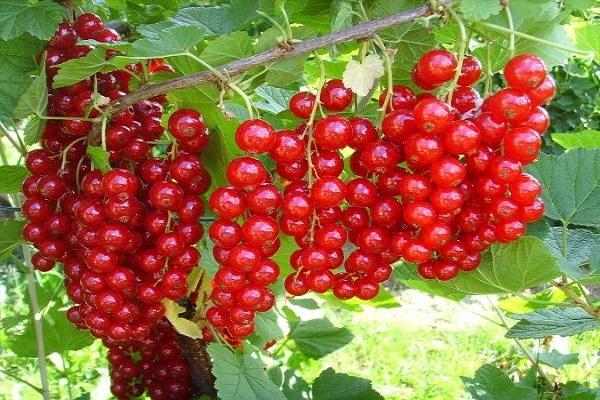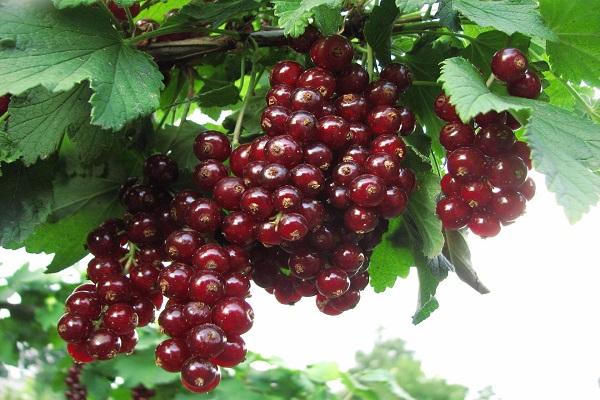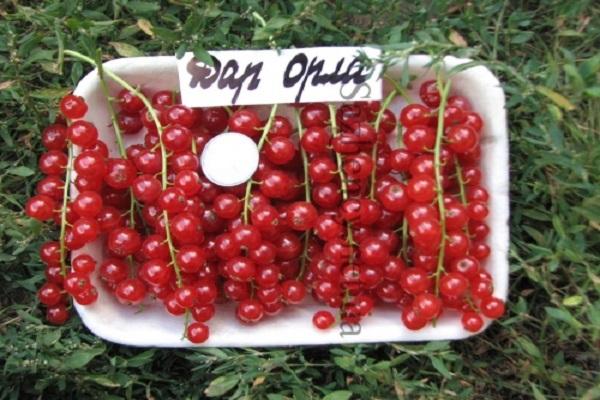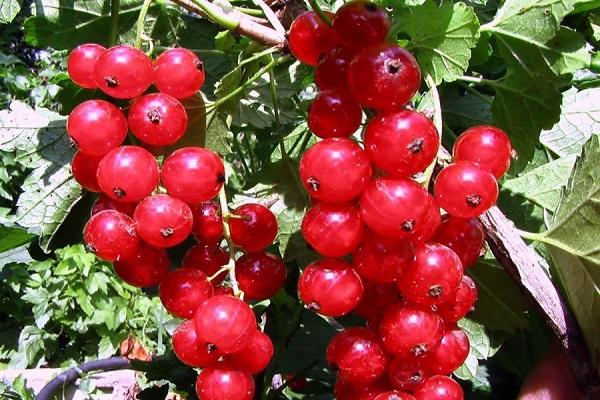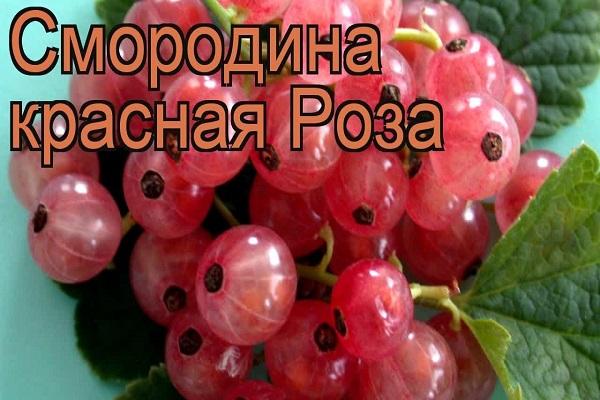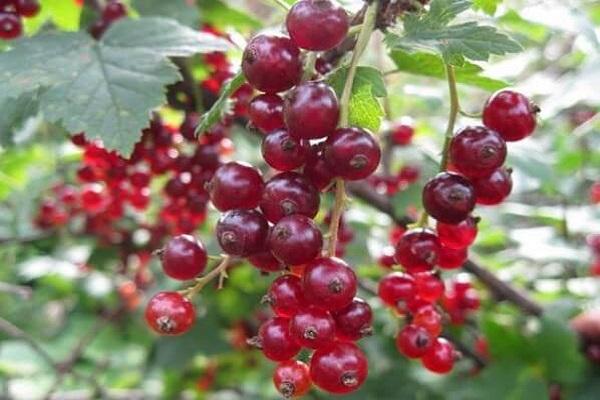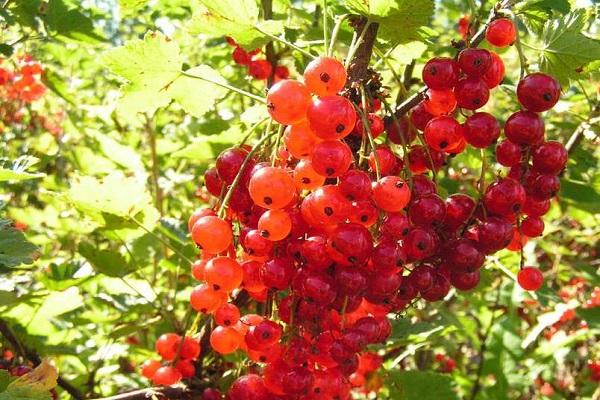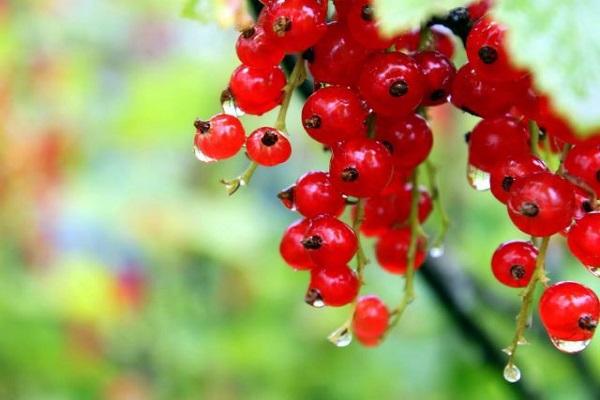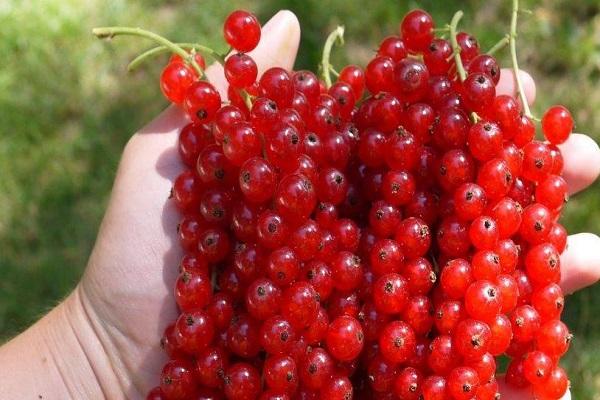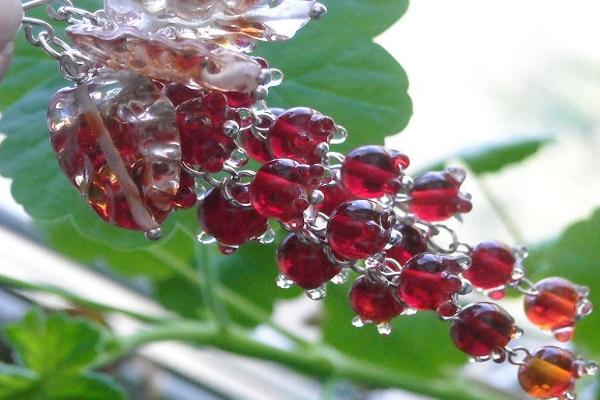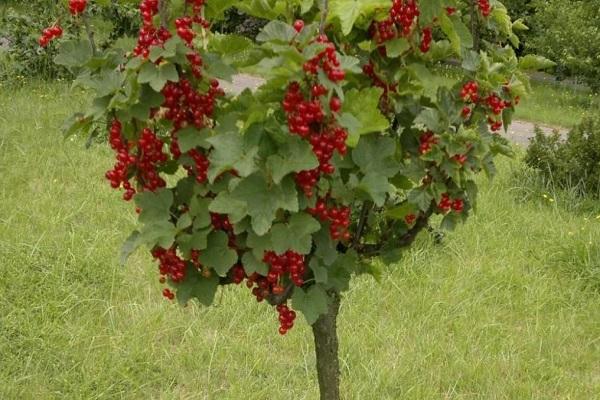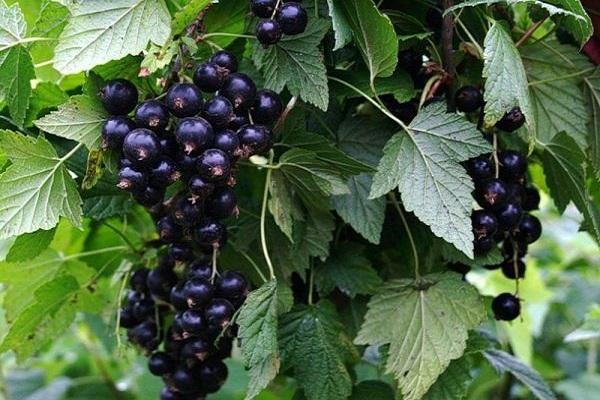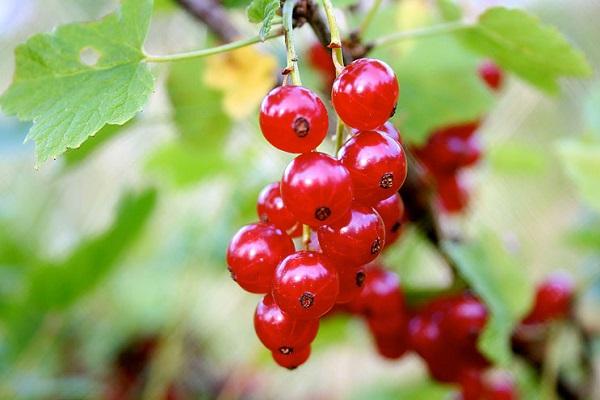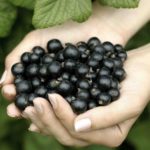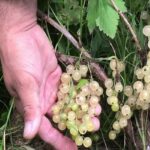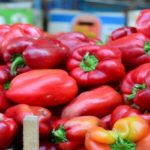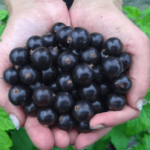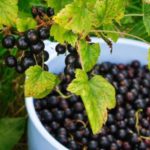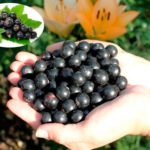Owners of summer cottages often breed red currants. Ripe berries can be used in cooking or folk medicine. Most often, the fruits are processed, but there are also large-fruited currants that are eaten fresh. Before you start planting, you need to familiarize yourself with the varieties of red currants.
- What does red currant look like?
- Types of red currants
- Early cultures
- Jonker van Tets
- Early sweet
- Cherry Vixne
- Chulkovskaya
- Medium ripening varieties
- Gift of the Eagle
- Rowada
- Late
- Dutch red
- Tatiana
- Beloved
- Seedless currant varieties
- The sweetest crops
- Disease resistant
- Large-fruited varieties
- Azora
- Alpha
- Baraba
- Winter-hardy varieties
- Scarlet Dawn
- Lights of the Urals
- Ural beauty
- New varieties
- Marmalade Girl
- Ilyinka
- Long-haired
- Self-fertile
- How to choose a variety depending on the region
- The best varieties of red currants for the middle zone
- Viksne
- Vika
- Versailles red
- Jonker van Tets
- Detvan
- Red Cross
- Cascade
- Houghton Castle
- Ob sunset
- Radiant
- Assora
- For the Moscow region
- Rondome
- Natalie
- Rosetta
- Roland
- Night
- Generous
- For the Urals and Siberia
- For the Altai Territory
- Fertodi
- Valencia
- Jennifer
- Serpentine
- For southern regions
- For northwestern Russia
- Conclusion
What does red currant look like?
Red currants are shrubs with jagged leaves and gray shoots with a greenish tint. In the wild, this plant is found near swamps, lakes and damp forests. The main distinctive feature of the berry is considered to be the early ripening of the fruits, which ripen in the first half of July.
Depending on the variety, the berries can be yellow, red or pink. They have an oval or round shape, the average size of each berry is 3-5 millimeters. The harvested crop is rarely eaten raw as it has a sour taste.
Types of red currants
There are different varieties of red currants, the characteristics of which are recommended to be familiarized with.
Early cultures
Some gardeners want to pick ripe berries as early as the end of June and therefore plant early-ripening varieties.
Jonker van Tets
Quite an old variety, which was bred in the forties of the last century. Jonker van Tets has tall bushes that grow up to 180-190 centimeters in open ground. The fruits are not very large, weighing only 1-2 grams.
Early sweet
A mid-early crop that ripens in early July. The shrub grows weakly and has a neat crown.The berries are quite large and weigh one and a half grams. They are covered with thin reddish skin and have sour flesh.
Cherry Vixne
The compact bush, 40-50 centimeters high, is resistant to drought and frost. The main feature of the variety is that the collected fruits have good transportability and resistance to cracking.
Chulkovskaya
Self-pollinating currants that can be grown in greenhouses or outdoors. Chulkovskaya has small red berries, the weight of which does not exceed 0.8 grams. They are too sour and therefore are rarely eaten fresh and are used only for processing.
Medium ripening varieties
To harvest at the end of July, currant varieties with medium ripening periods are planted.
Gift of the Eagle
The most popular mid-season currant, which manages to ripen until the beginning of August. Dara Eagle has large brushes, the length of which reaches 15 centimeters. 15-20 berries weighing 0.8-0.9 grams are formed on each cluster. At least 10-12 kilograms of harvest are harvested from each bush. The berries contain many vitamins and therefore are used in folk medicine.
Rowada
A mid-ripening berry that ripens within 40-50 days. Rowada differs from most varieties of currants in having highly branched and strong bushes that can grow up to 80-95 centimeters. In summer, clusters of berries form on the bushes. With proper care, each bush can yield 8-9 kilograms of harvest.
Late
Some gardeners prefer to pick berries in late summer. For this purpose, late-ripening berries are planted.
Dutch red
The oldest European variety that can be grown both outdoors and in greenhouses. Dutch currant has the following benefits:
- taste qualities;
- frost resistance;
- transportability;
- productivity.
Fruit ripening begins in mid-August and continues until the end of the month. The berries have a pleasant sour taste and are used to make jam and compotes.
Tatiana
A hybrid variety with fast-growing bushes that grow up to 60 centimeters in height. The plant has large leaves that are colored rich green. 10-12 berries with a mass of 0.7-0.8 grams are formed on Tatyana’s clusters.
Beloved
A variety with neat compact bushes that branch weakly. In spring, Beloved is covered with greenish leaves with a perfectly smooth leaf blade. In mid-summer, reddish spherical currants form on the plants. On average, 6-8 kilograms of currants are harvested from a bush.
Seedless currant varieties
There are several types of currants whose fruits do not contain seeds. These include:
- Rose. The plant belongs to the group of the most delicious varieties of berries. Rose fruits do not have a sour taste, and therefore many people eat them fresh. The berries weigh 0.8 grams and are covered with thin pinkish skin. The rose is resistant to septoria and many other diseases.
- Valentinovka. A self-fertile berry that ripens in late summer. Valentinovka has small currants, the weight of which does not exceed 0.5 grams. The yield is 3-4 kilograms per bush.
The sweetest crops
People who do not like the sour taste of currants should plant the sweetest varieties:
- Sugar. An early ripening berry with rounded fruits that grow up to one gram. The main features of the variety include a pleasant sweet taste, excellent transportability and resistance to sudden temperature changes.
- Sarah.A mid-season frost-resistant plant that is ideal for planting outside. Sarah's berries are bright red and oval in shape. They are suitable for making jam and compote.
Disease resistant
To prevent planted bushes from dying from diseases, it is necessary to plant plants that are resistant to common pathologies. These berries include:
- Gazelle. A compact, medium-sized plant that is protected from fungal diseases. Gazelle berries do not crack and are stored for a long time.
- Tisel. An early ripening berry with resistance to fungal and viral pathologies. The advantages of Tisel include ease of cultivation and excellent transportability of the harvested crop.
Large-fruited varieties
Gardeners who prefer to eat fresh berries prefer to plant large-fruited currant species.
Azora
A powerful and tall bush that has wide spreading branches. The harvest ripens by the end of summer and is therefore classified as a late-ripening variety of berries. Ripe fruits are dark burgundy in color and weigh up to two grams.
Alpha
A high-yielding and tall-growing berry, which is popular among summer residents. Alpha fruits are covered with a light reddish skin. After ripening, the weight of each berry is 1-2 grams. The variety does not die from drought and does not suffer from powdery mildew.
Baraba
A low plant that grows up to 75 centimeters. Baraba has excellent productivity, which allows you to get 6-8 kilograms of currants from each bush. The main disadvantage of the variety is that it often suffers from anthracnose.
Winter-hardy varieties
In open ground it is necessary to plant berries that are reliably protected from frost.
Scarlet Dawn
A tall shrub with an ideal rectangular crown.Currants will be fully ripe by the 15th-20th of July, and therefore they are considered a mid-ripening berry. The Scarlet Dawn has a sweetish-sour taste and is suitable for raw consumption and processing.
Lights of the Urals
Many gardeners in the northern regions plant Ural Lights, as they cope well with low temperatures. When grown outdoors, the weight of the berries is 0.5-0.6 grams. If you plant bushes in a greenhouse, their weight will increase to a gram. The lights of the Urals are reliably protected from fungal diseases and pests.
Ural beauty
The most frost-resistant type of currant that does not die under the influence of low temperatures. Among the advantages of the Ural beauty are its protection from pests, resistance to diseases and high productivity.
New varieties
There are several new varieties of berries that are popular among gardeners.
Marmalade Girl
A tall shrub that can grow up to one and a half meters. At the end of spring, huge green leaves appear on the bushes, and in the summer fruits are formed on the branches, which are red in color and have a slight orange tint. The average weight of ripe currants is 0.5-0.7 grams.
Ilyinka
A mid-ripening currant that ripens in the second half of summer. The characteristic features of Ilyinka include large currants, which weigh 1.6-1.7 grams. The harvest is burgundy in color with a pinkish tint, and the taste has a slight sourness.
Long-haired
Long-leaved currant grows up to one meter in height. The main advantage of the variety is its winter hardiness, which allows the bushes to be grown at low temperatures. In spring, fruit clusters appear on the plant, which by mid-summer grow to 10-15 centimeters in length.
Self-fertile
Gardeners who want to regularly get a good harvest of currants should plant self-fertile varieties of berries:
- Zadanubskaya. A self-fertile variety that bears fruit well even when grown in unfavorable climates. 6-10 kilograms of berries are collected from the bush.
- Creamy. A high-yielding variety that finishes bearing fruit at the end of summer. Cream currants are not afraid of drought and severe winter frosts. The yield from each bush is 10-11 kilograms.
How to choose a variety depending on the region
When choosing a suitable variety, take into account the climate of the region in which the currants will be planted.
The best varieties of red currants for the middle zone
Here it is recommended to plant plants that have powerful branches and are resistant to low temperatures.
Viksne
A tall shrub that grows up to two meters in height. The bush has strong and powerful shoots that are colored gray. Viksna has good fruiting, thanks to which at least eight kilograms of berries are obtained from the bush. They begin to ripen at the end of June or July.
Vika
A relatively young variety, which was created by domestic breeders for breeding in the middle zone. The main advantages of Vicky include undemandingness to soil composition, excellent productivity, immunity to diseases and the sweet taste of ripe currants.
The berries are covered with red skin with a slight brown tint, they weigh 1-1.2 grams.
Versailles red
A medium-sized plant with long trusses that grow up to 12-14 centimeters. The Versailles bush has large berries weighing about two grams. They are yellow in color and have a pleasant sweetish taste. The yield of such currants is average and therefore no more than five kilograms of crop are harvested from the bush.
Jonker van Tets
The variety is distinguished by the intensive development of bushes that grow up to two meters. The shrub has erect shoots on which fruit clusters appear in early summer. Each of them produces 10-15 flat-round berries weighing 0.5 grams. The surface of the berries is covered with a dense red peel. The currant pulp is sweetish, it contains 4-5 seeds.
Detvan
Czech berry that is resistant to common diseases and pests. Detvan has huge clusters in which 15-17 reddish fruits grow. The yield per seedling is 6-9 kilograms.
Red Cross
An American hybrid variety with wide, spreading bushes one and a half meters high. Red Cross berries are small, their weight reaches 0.4-0.6 grams. Among the advantages of the plant are protection from illnesses and resistance to frost.
Cascade
The plant is classified as a mid-early berry that ripens until mid-July. The cascade has huge hanging fruit cysts 12 centimeters long. The main advantages of ripened fruits of this type of currant include dessert taste, transportability and keeping quality.
Houghton Castle
A vigorous plant bred by Western European breeders. The growing season ends in late summer and Houghton Castle is therefore considered a late ripening plant. The sweet and sour berries are covered with burgundy skin and weigh 1-1.5 grams.
Ob sunset
A vigorous and spreading shrub, the height of which reaches 120-130 centimeters. Ob sunset has small fruits weighing 0.2 grams. The pulp of the ripened harvest is sweet and does not have a sour taste.
Radiant
A high-yielding variety of currants, which is recommended to be grown in the middle zone. Radiant is resistant to frost, and therefore planted seedlings do not die even in severe frosts.The fruits are large, weighing 1.3-1.4 grams.
Assora
Late-ripening currants, whose growing season ends in August. Assora has medium fruit clusters, which contain 10-12 large berries weighing two grams. The shrub is resistant to powdery mildew and frost.
For the Moscow region
There are several currant varieties that grow better than others in the Moscow region.
Rondome
Dutch tall shrub that has powerful leafy shoots. Rondome is distinguished by its productivity and tasty berries. The weight of each currant reaches 1-1.3 grams. Rondom can be grown both in greenhouses and in the open air.
Natalie
Gardeners living in the Moscow region often plant in Natalie’s garden. This is a low bush with large berries that weigh 1.7-1.8 grams. Natalie's pulp has a sweet-sour taste. Shrubs are resistant to common diseases and frosts.
Rosetta
A shrub with powerful branches that can grow up to 145 centimeters. The fruits form on the bush in July, and therefore Rosetta is considered an early ripening plant. The disadvantages of currants include poor resistance to dampness and low yield.
Roland
A new variety of currant, which was created by gardeners from Holland. Among the features of Rolan are frost resistance and good yield. Each bush bears 7-10 kilograms of fruit. The maximum weight of berries is 2-2.5 grams.
Night
A vigorous bush that easily tolerates autumn-winter frosts and is not susceptible to insect attacks. Nochka has medium-sized fruit clusters with red berries weighing 1.3 grams. Harvest ripening ends in the first ten days of August.
Generous
A medium spreading shrub that grows up to two meters when grown in the garden. The round berries turn red after the end of the growing season. They are often eaten fresh as they are not very sour.
For the Urals and Siberia
The climatic conditions of Siberia and the Urals do not allow the cultivation of some types of currants. Siberian gardeners recommend cultivating Diamond currants in the northern regions. This plant has excellent frost resistance and tolerates any frost.
You can also plant Bayan berry, whose root system can develop even in frozen soil. Bayana is resistant to anthracnose, powdery mildew and other fungal diseases.
For the Altai Territory
Breeders have developed several varieties specifically for planting in the Altai Territory.
Fertodi
Mid-season currant created by Hungarian breeders. Fertodi is popular among gardeners due to its resistance to infections, pests and frost. The bush grows up to 2-3 meters and therefore will have to be tied up. Fertodi fruits are too sour, and therefore they are only suitable for processing.
Valencia
Gardeners of the Altai Territory often plant Valencia on the site. This shrub is low-growing, its height does not exceed 75 centimeters. Valencia's fruit clusters reach 14 centimeters in length and produce 14-15 berries weighing 1.5 grams. Valencia is considered a high-yielding type of currant, as the bush produces more than 5 kilograms of berries.
Jennifer
An early-ripening type of red currant, which is grown by many gardeners in the Altai Territory. Jennifer has a good level of productivity. On average, each bush produces more than four kilograms of harvest.
Serpentine
Under favorable conditions, Serpentine bears fruit well, its yield exceeds 6-7 kilograms per bush. The shrub is resistant to soil freezing, infectious diseases and droughts. The fruits are not sour and are suitable for consumption without processing.
For southern regions
Plants with resistance to drought and high temperatures are suitable for planting and further growing berries in the southern regions. It is recommended to plant the following varieties of berries:
- Detvan. A Czech hybrid variety that thrives in warm regions. Despite the fact that Detvan has small berries, its yield reaches 10-13 kilograms per bush.
- Rosita. A tall shrub that grows quickly in the southern regions of the country. Rosita's yield is low - 2-3 kilograms.
For northwestern Russia
The climatic features of the regions located in the northwestern part of the country do not allow the cultivation of many varieties of berries. The following plants are suitable for growing in the northwest:
- Generous. An early-ripening variety created specifically for planting in the northern regions. The harvest will be ripe in the summer, at the end of July.
- First born. Frost-resistant and high-yielding plant with powerful bushes. The fruits of the Firstborn ripen in the 20th of August.
Conclusion
Red currant is the most common berry grown by all gardeners. Before planting it, you need to familiarize yourself in detail with the main features of common varieties of currants. This will help you choose the right variety for further cultivation.

